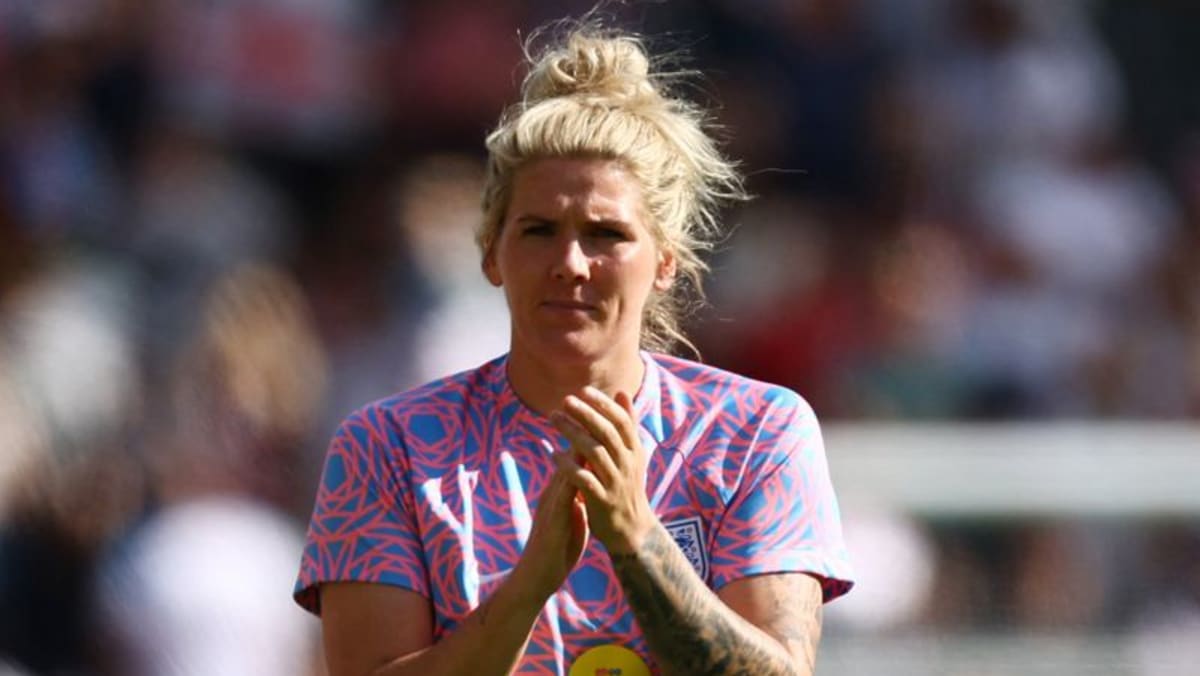England’s Bright joins chorus of calls for action on ACL injuries
MANCHESTER, England : Footballers missing tournaments through injury has always been part and parcel of the game but the sheer number of women whose World Cup dreams have been dashed by anterior cruciate ligament ruptures this year has led to calls for a radical rethink.
“There always needs to be more done,” said England captain Millie Bright in the wake of three of her team mates being ruled out of the event that starts this month through ACL issues.
“From a female perspective, it is different. We all know the body is very different to the male. But it is more than just one factor. It’s facilities, pitches, the number of games we are playing – the amount of rest is absolutely critical.
“It’s everything together, and all the elements need to align if we want to perform at the highest level.”
The European champions have lost captain Leah Williamson, Euro 2022 Golden Boot winner Beth Mead and Fran Kirby.
Other key players missing with ACL injuries include Janine Beckie (Canada), Delphine Cascarino and Marie-Antoinette Katoto (France), Vivianne Miedema (Netherlands), and Catarina Macario and Mallory Swanson (United States).
Williamson, Mead and Miedema were three of a remarkable four Arsenal players to rupture ACLs this season.
“If the same thing happened with Arsenal’s men’s side with probably their three best players, that should be enough for a: ‘Why is this happening? Look into this,'” Beckie said in April.
“It seems like there’s been this massive jump in the amount that it’s happening now. I don’t know what the reason is but someone needs to figure it out,” she told Reuters.
SEVERAL THEORIES
Various studies suggest women are two to eight times more likely to suffer ACL injuries compared to men in the same sport and 25 per cent less likely to return after recovery. Women are also more prone to osteoarthritis in repaired knees later in life.
There are a variety of theories as to why but the consensus is that the issue is multi-faceted.
One theory points to women playing in boots designed for men. A recent report revealed as many as 82 per cent of female players in Europe surveyed experience discomfort wearing football boots.
Bright, who is back with England after suffering a non-ACL knee injury with Chelsea in March, said she was “totally stunned” by the high percentage of dissatisfaction.
“It’s really hard to find the perfect boot, a lot of players have orthotics. More needs to be looked into around that,” the 29-year-old said. “Things won’t change overnight, so it’s about having that conversation then hoping to see changes.”
Other theories point to the anatomical differences in female players and changing hormones during women’s menstrual cycles.
However, Jackie Whittaker, an associate professor at the University of British Columbia’s Faculty of Medicine, said nothing around physiological differences is proven and worries about the messaging.
“I don’t want young girls to hear the message that, oh, because I have my period, I’m going to tear my ACL or because my hips are a bit wider, I probably shouldn’t play the sport,” Whittaker said.
“Before we start saying the menstrual cycle or hip width is part of the risk, we need to be damn sure that that actually is the case.”
NO PROTECTION
Whittaker was part of a research team in a recent study on the use of contraceptives in protecting against musculoskeletal injuries, including ACL tears. Their conclusion was that they do not offer protection.
“I think part of why we did that paper looking at the pill was I had parents say to me, ‘Well, the coach of my nine-year-old girl who plays soccer has asked that she starts the pill so she doesn’t tear her ACL.'”
Whittaker and others point out that the women’s football schedule has increased severalfold to mimic the men, yet support for female players – access to top physiotherapy etc – has not kept up.
Also girls are usually not exposed to the same elite level of training as early as boys and so have not built up the same base of strength.
“You think of a player like Marta or (Christine) Sinclair, or some of the older players like Jill Scott, when they started, they didn’t play as frequently as they play now, they didn’t have access to the strength and conditioning facilities or (top) coaches,” Whittaker said.
“And now the demand has been put on them to play more frequently, to do more strength training, to have access to more resources – all of those things are great but it’s combined to create an environment where you’ve gone on from maybe not having years of building physical capacity to the same extent that a guy might have had.”
Securing funding for research on studies around elite sport, Whittaker added, is not easy and suggests an organisation such as world soccer governing body FIFA or global players union FIFPRO fund a study.
The NBA and General Electric, she said as an example, backed a study on tendon injuries in basketball – GE because they sell ultrasound machines.
“So sometimes you can get private industry saying, ‘Hey, we feel like this is a really important thing,'” Whittaker said. “I think that the girls speaking out might increase the likelihood of that happening.
“It’s horrible that such a number of high-level players have been injured but in a way there’s a blessing because people that weren’t paying attention before are paying attention now.”
For all the latest Sports News Click Here

